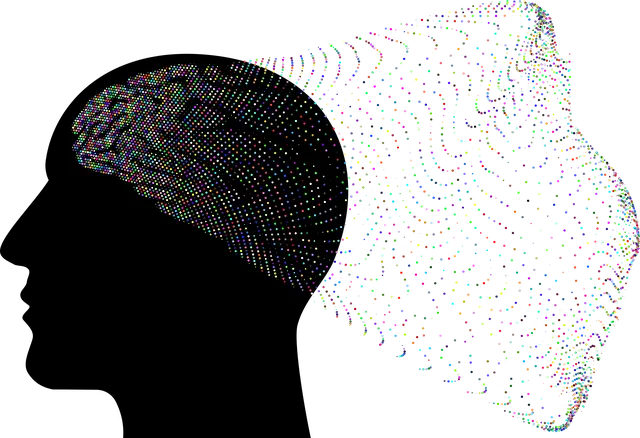Effective community outreach in healthcare starts with understanding local needs, as demonstrated by Kaiser Permanente's initiatives in Lafayette. Their tailored programs address key gaps, such as stress management and conflict resolution skills, through age- and culture-specific workshops. The Kaiser Permanente Mental Health Facility in Lafayette offers diverse services to support mental well-being, combining therapeutic modalities with community outreach to destigmatize mental health. Strategic partnerships with local organizations maximize impact, while measuring success and continuous improvement ensure programs meet unique community needs.
Community outreach programs play a pivotal role in bridging the gap between healthcare services and those who need them most. This article explores how organizations, such as the Kaiser Permanente mental health facility in Lafayette, can effectively implement outreach initiatives. We delve into understanding community needs, creating inclusive programs, building strategic partnerships, and measuring success to ensure these efforts resonate deeply and foster positive change. Discover key strategies for transforming lives through targeted outreach.
- Understanding Community Needs: A Foundation for Effective Outreach
- Kaiser Permanente Mental Health Facility Lafayette: A Resource Hub
- Designing Inclusive and Targeted Programs
- Building Partnerships: Collaboration for Maximum Impact
- Measuring Success and Continuous Improvement
Understanding Community Needs: A Foundation for Effective Outreach

Understanding community needs is a foundational step for effective outreach programs, especially when focusing on healthcare and well-being initiatives. Organizations like Kaiser Permanente mental health facilities in Lafayette aim to address specific challenges within the local community. By conducting thorough assessments and engaging with residents, these facilities can identify pressing issues such as high stress levels, lack of conflict resolution skills, or limited access to emotional well-being promotion techniques. These insights enable tailored programs that resonate with the community’s unique requirements.
For instance, workshops on stress management and conflict resolution techniques could be designed to cater to different age groups and cultural backgrounds. Such initiatives ensure that outreach efforts are not only effective but also inclusive and relevant, fostering a deeper connection between healthcare providers and the community they serve.
Kaiser Permanente Mental Health Facility Lafayette: A Resource Hub

The Kaiser Permanente Mental Health Facility in Lafayette serves as a vibrant resource hub for the community, offering a wide array of services and programs aimed at enhancing mental well-being. This facility recognizes the importance of mental health education programs design that cater to diverse needs, focusing on initiatives that promote emotional regulation and foster self-care practices among all ages. Through its comprehensive approach, the center provides not only treatment but also prevention strategies, ensuring a holistic support system for Lafayette residents.
By integrating various therapeutic modalities and community outreach, the Kaiser Permanente Mental Health Facility aims to reduce stigma surrounding mental health issues while empowering individuals with practical tools for managing stress and improving overall resilience. Their programs are meticulously crafted to cater to different life stages, cultural backgrounds, and unique challenges, making mental healthcare accessible and tailored to the specific needs of Lafayette’s diverse population.
Designing Inclusive and Targeted Programs

When designing community outreach programs, particularly for a mental health facility like the Kaiser Permanente Lafayette location, inclusivity and targeted approach are paramount. The Mental Health Policy Analysis and Advocacy should guide program creation to ensure services meet the diverse needs of all community members. By employing strategies that consider age, cultural background, abilities, and socioeconomic status, the programs can be tailored to different segments of the population.
For instance, Mental Health Education Programs Design can empower individuals through knowledge by teaching self-care techniques and mental health management skills. Encouraging regular Self-Care Routine Development for Better Mental Health within the community can significantly contribute to overall well-being. Collaborative efforts with local schools, community centers, and faith-based organizations can help reach a broader audience and foster an environment of support and understanding.
Building Partnerships: Collaboration for Maximum Impact

Building partnerships is a key strategy for maximizing the impact of community outreach programs, especially when focusing on mental health initiatives like those offered at the Kaiser Permanente Lafayette mental health facility. By collaborating with local organizations, schools, and community centers, the facility can extend its reach and create a more holistic approach to emotional well-being promotion. This collaborative effort allows for the integration of Empathy Building Strategies and Mind Over Matter Principles, fostering an environment where individuals feel understood and empowered to take control of their mental health.
Through partnerships, the Kaiser Permanente Lafayette team can jointly design programs that address specific community needs, ensuring that Emotional Well-being Promotion Techniques are tailored and accessible. Such collaborations strengthen the overall mental health ecosystem, encouraging a culture of open dialogue and support. By working together, these organizations can break down barriers to care and create sustainable change, ultimately enhancing the lives of those within the community.
Measuring Success and Continuous Improvement

Measuring success and implementing continuous improvement are vital components of any community outreach program, especially when focusing on mental health initiatives at a Kaiser Permanente facility in Lafayette. By establishing clear metrics and regularly evaluating program effectiveness, organizations can ensure their efforts align with the unique needs of the local community. This process involves collecting quantitative and qualitative data to assess outcomes, participant satisfaction, and the overall impact on individuals’ well-being.
For instance, tracking attendance rates, engagement levels, and long-term participation in programs like Mind Over Matter workshops or Self-Care Routine Development sessions can provide valuable insights. Additionally, gathering feedback through surveys or interviews allows for a deeper understanding of participants’ experiences, identifying areas that require refinement. This data-driven approach ensures that risk management planning for mental health professionals is proactive and tailored to the community’s evolving needs, fostering continuous growth and improvement in service delivery at the Kaiser Permanente mental health facility in Lafayette.
Community outreach programs, as demonstrated by the successful model at the Kaiser Permanente Mental Health Facility in Lafayette, are transformative tools that can greatly enhance access to resources and support. By understanding community needs, designing inclusive programs, building strategic partnerships, and continuously measuring success, organizations like Kaiser Permanente can create a ripple effect of positive change. The Lafayette facility serves as a testament to how collaborative efforts and targeted initiatives can foster improved mental health outcomes for diverse communities, making it a valuable resource hub and an inspiration for future outreach endeavors.






